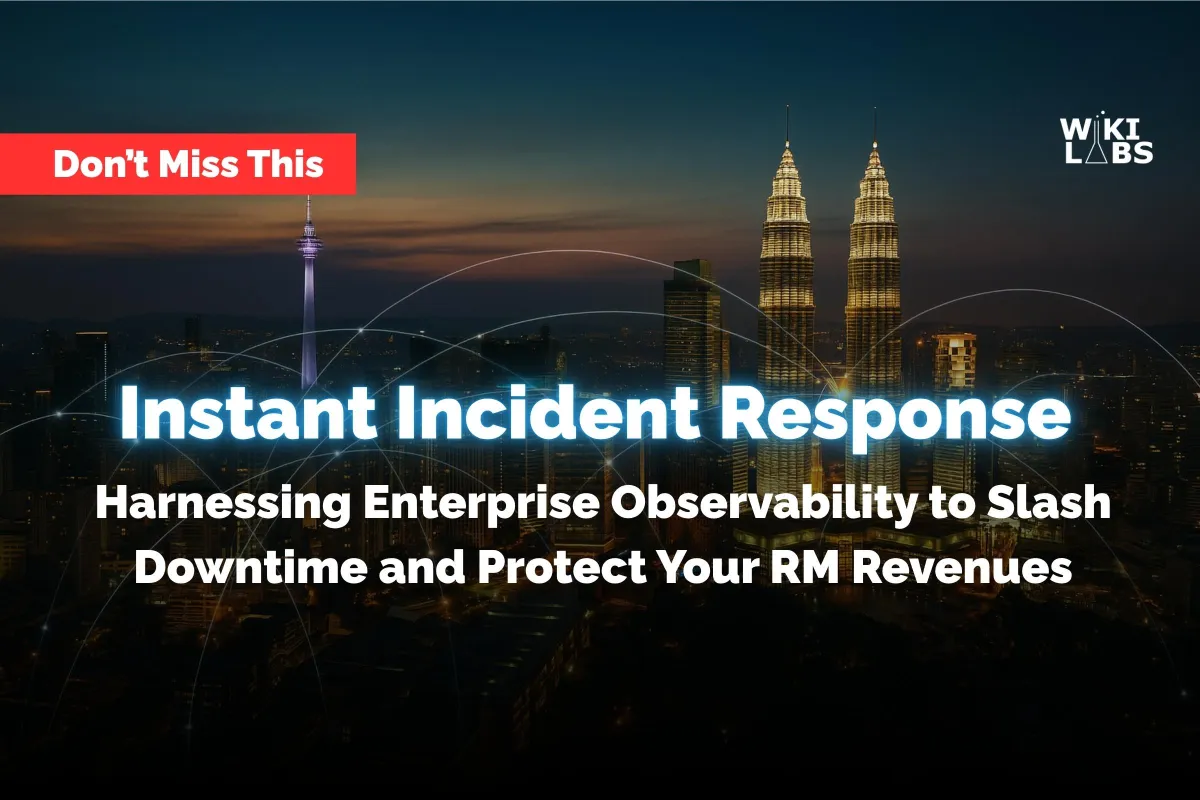
Automated Incident Response
Automated Incident Response with Enterprise Observability

Introduction
Unplanned outages bring operations to a standstill and every minute offline carries a hefty price tag. For a large Malaysian telco, even a one-minute interruption can translate into RM 25,000 or more in lost transactions, reputational damage and remediation costs. By combining enterprise-grade observability with automated response playbooks, organisations can transform noisy, manual processes into lightning-fast, policy-driven actions slashing Mean Time to Repair (MTTR) and protecting RM-denominated revenues.
Who This Is For
CIOs, IT directors and operations managers at Malaysian banks, telcos, GLCs and large enterprises anyone responsible for ensuring 24/7 service availability or who feels the impact of downtime in Ringgit will find practical guidance here.

Operational Challenges
Alert Overload: Monitoring tools generate thousands of alerts daily, causing fatigue and missed critical events.
Manual Playbooks: Relying on human-driven incident response introduces delays, errors and inconsistent remediation.
High MTTR: Slow investigation and resolution inflate RM losses and erode customer trust.
Siloed Toolchains: Disparate monitoring, ticketing and automation platforms hinder end-to-end visibility and action.
Want to cut through the noise? Reach out to explore how our automated playbooks can streamline your alerts today.

Supporting Data
RM 25,000 per minute is the average cost of downtime for a Malaysian telco, extrapolated from global industry reports and local revenue models.
Organisations with automated incident response see up to 70% reduction in MTTR, translating to RM 300,000+ in monthly savings for large enterprises.
Teams using integrated observability platforms spend 50% less time on firefighting, freeing resources for strategic projects.

Real-World Example
A GLC’s digital-services division struggled with nightly batch-job failures. Manual investigation took 45 minutes on average, costing roughly RM 1.1 million per incident. After deploying a unified observability stack (logs, metrics, traces) and configuring automated playbooks to restart failed jobs, they cut MTTR to under 5 minutes—saving over RM 900,000 per incident and liberating their SRE team for innovation.
Curious how this could work for you? Let’s schedule a pilot to demonstrate these results in your environment.

Solution Overview
Unified Data Ingestion: Collect logs, metrics and traces from on-premises and cloud workloads into a single observability platform.
Smart Alerting: Use dynamic thresholds and anomaly detection to surface only high-business-impact incidents.
Automated Playbooks: Define policy-driven runbooks that trigger remediation actions (restarts, scaling, fail-over) automatically via your automation engine.
Closed-Loop Feedback: Feed post-incident telemetry back into your observability system to refine alert rules and playbooks continuously.
Benefits
Drastic MTTR Reduction: From hours to minutes—freeing up over 70% of your operations team’s time.
RM Cost Savings: Avoid RM hundreds of thousands per incident through rapid, consistent response.
Enhanced Resilience: Automated remediation ensures critical services self-heal, maintaining SLAs.
Operational Transparency: Dashboards give management real-time visibility into incident trends, root causes and cost impact.

Getting Started
Assessment: We begin with a free readiness review—mapping your current monitoring, ticketing and automation landscape.
Pilot: Implement observability ingestion and a single automated playbook for your highest-impact use case.
Scale: Roll out additional playbooks, refine alert policies and expand to other services.
Ready to transform your incident response and protect RM revenues? Contact us today for a complimentary assessment and discover how automated incident response with enterprise observability can safeguard your business.
